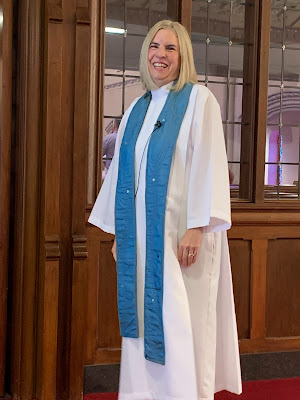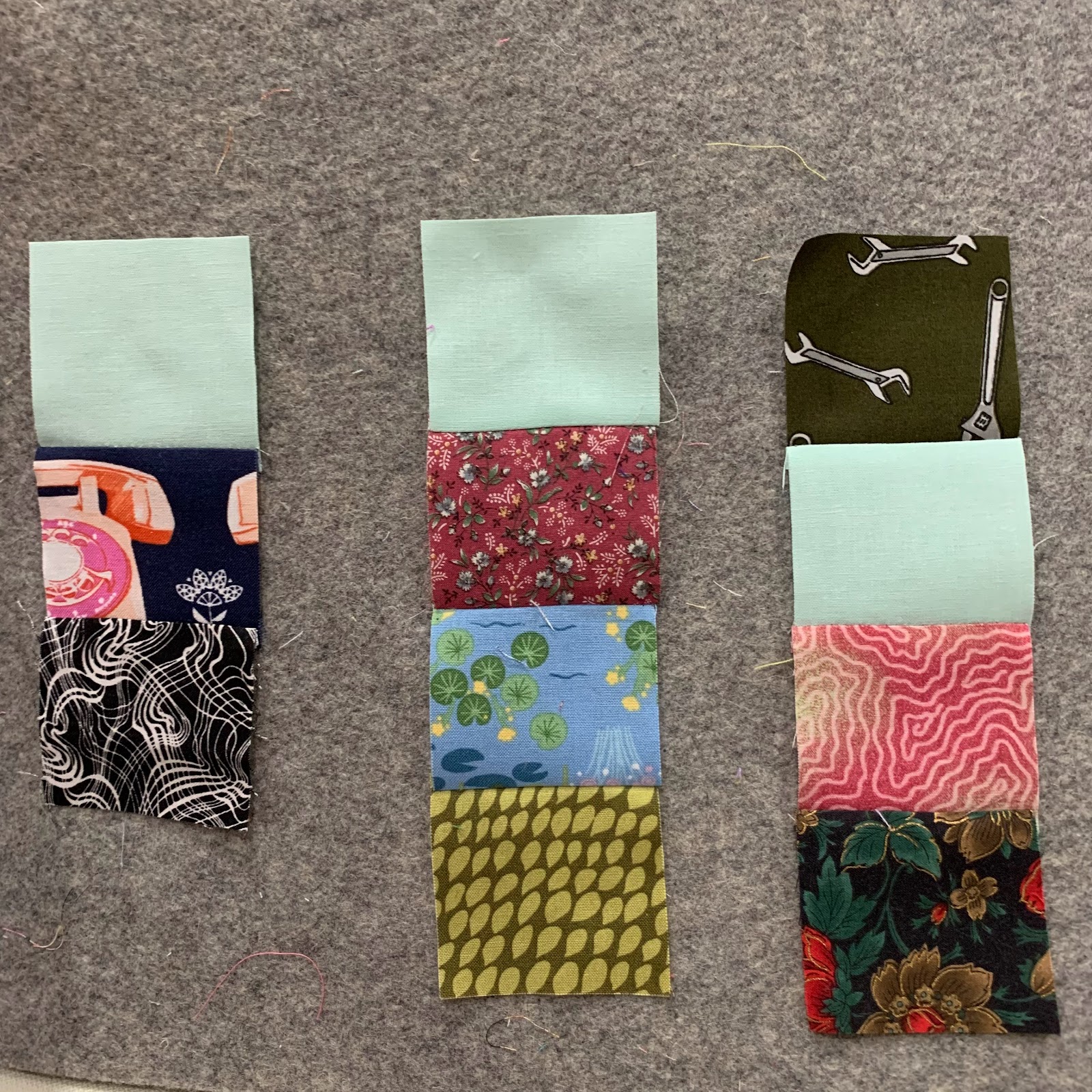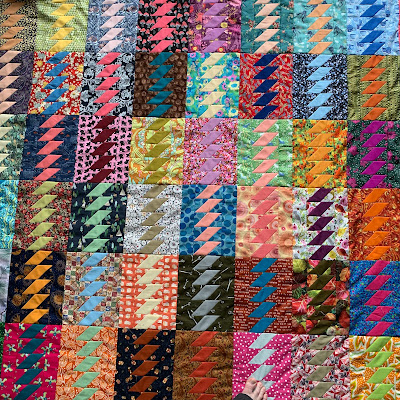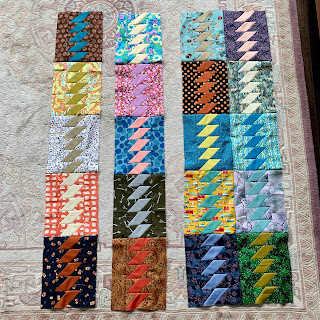
I had retired from making liturgical pieces. I find them taxing to make in the over-thinking I do in how they will look from a distance and close up, symbolism, how to personalize them, how to make them meaningful. It takes a lot out of me!
This spring when Rev. Nickerson joined our pastoral staff, the church asked me to make one as a gift from the congregation and, though overwhelmingly busy with work, stepped in as I had some ideas.
Ordinary time is a special time in the liturgical calendar as there is nothing special going on! That appeals to me. How precious ordinary time is.
The color for ordinary time is green. Liz said she favors green on the blue/green side of it and I found a lovely duckegg colored silk from Mood. It is a shot silk. so from different angles it looks dull green to vivid turquoise.
Because she focuses on family ministry, I liked the idea of duckegg as the children tend to follow her like baby ducks.
I asked for verses/imagery to think of and she mentioned loving verses of eagles on wing and of solid rock foundations.
The piece is quilted with 4 rows of thread making a trinity of channels that look like thermals that eagles glide upon. The lining is a lovely striped linen that reminds me of the limestone wall of St Pauls in the chancel.
See what I mean that these take a lot out of me? A joy, but, a lot.
My time was limited to work on this by Installation Sunday, so I put out word to church friends who are good with a needle to meet me in the balcony with their thimbles to help with the handwork of the binding. We sewed through the second hymn of the service to get it finished in time for the installation after the sermon. Sneaked it up the side aisle.
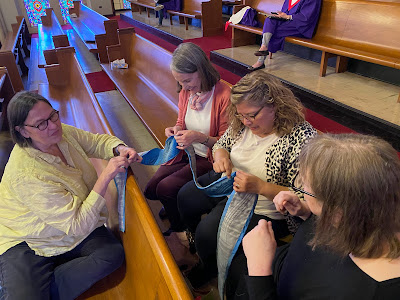

Members of the congregation signed lining at the reception and I like the idea of them embracing with love. I have a few people select tiny buttons and choose where to place them.
Ordinary objects representing seeds in ordinary time.

